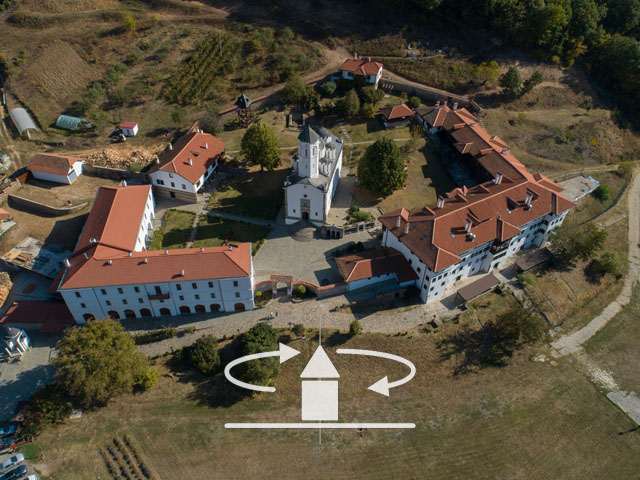Prohor Pčinjski Monastery
Protected cultural monument of extraordinary significance, listed under SK 224 in the Central Registry of the Republic Institute for the protection of cultural heritage.
Prohor Pčinjski Monastery,village Klenike, Bujanovac municipality, Pčinja administrative county
Where is it located?
Prohor Pčinjski Monastery is built on the woody slopes of Kozjak Mountain, on the left bank of the river Pčinja, next to the village Klenike, 30 km away from Vranje to the south. Today it is a friary.
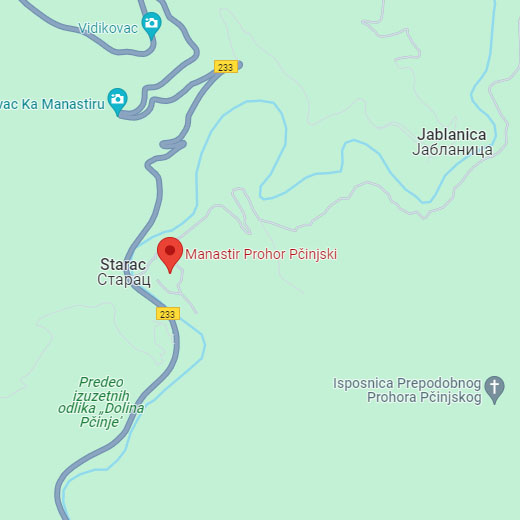
History
Systemic archaeological research and the insight into historical sources confirmed that the original single-nave church located on the site of today's church was built in late 11th or early 12th century. The church dedicated to Prohor of Pčinja at the foot of the Kozjak Mountain was built by the Roman emperor Romanos IV Diogenes (1067-1071).
Stefan the First-Crowned says that, after Nemanja's conquest of Vranje region and its annexation to Serbia, St. Sava reorganized the church and thus the monastery belonged to Serbian state since 1220. The care of the monastery continued even after the definitive fall under the Turkish reign
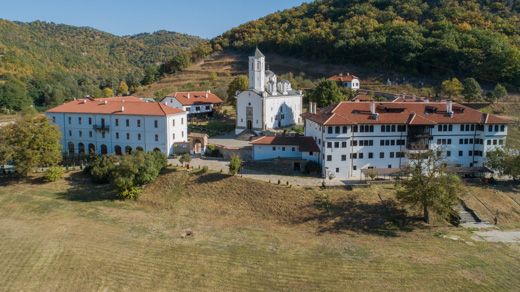 A great restoration of the church was performed during the reign of King Milutin who in 1316/1317 hired Thessaloniki painters Michael Astrapas and Eutychios to paint the new temple. Part of that iconography is preserved to this day. The restoration is mentioned in “Karlovački rodoslov” and is confirmed by the brick built in the north facade of the old church bearing the inscription SAVA, referring to archbishop Sava III who immediately supervised the restoration.
A great restoration of the church was performed during the reign of King Milutin who in 1316/1317 hired Thessaloniki painters Michael Astrapas and Eutychios to paint the new temple. Part of that iconography is preserved to this day. The restoration is mentioned in “Karlovački rodoslov” and is confirmed by the brick built in the north facade of the old church bearing the inscription SAVA, referring to archbishop Sava III who immediately supervised the restoration.
After the battle of Kosovo, the Ottomans ravaged the monastery completely; it was restored by the nobleman Marin from Kratovo in 1489. The iconography made on the occasion is one of the most significant painting endeavors of its time.
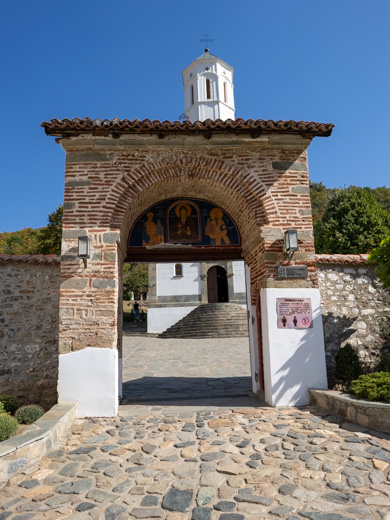
Monastery was returned to Serbian state in 1912.
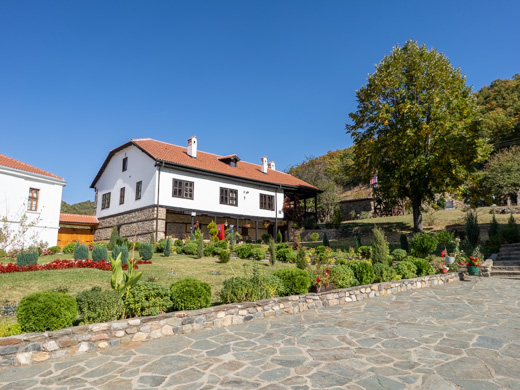
Description
Around the monastery complex there is a stone wall made of hewn stone, covered with stone slabs and shingles. Next to the fence, on the southern and northern side, there are magnificent monastic residencies. The main monastery gate, Vranjska, is located in the west and leads straight to the church. The southern gate is facing Kumanovo and is named thereafter. Inside the ramparts is the building of Metropolitante, and the research revealed the foundations of the former Church of St. John.
The original church built above the grave of the saint was destroyed and restored many times. Today’s monumental church built in 1898 included the earlier edifices: in the altar space is the tomb of venerable St. Prohor of Pčinja and the ossuary with remains of the monks. The northern wall preserves a border that suggests that the church had a built iconography.
The walls were painted by Lukijan Babić and Trajko Jovanović Muftinski, 1933-1935.е.
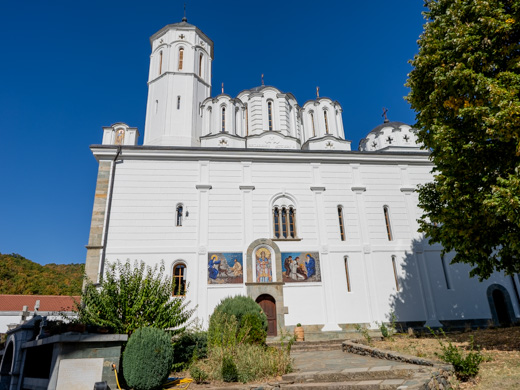
Dating
The original church was built in late 11th century. During the time of King Milutin, in 14th century, it was thoroughly restored and painted. The church obtained today's appearance during the last restoration after the liberation from the Turks in 1898.
Folk lore, legends
The folk lore says that the monastery was built in the 11th century by the Byzantine emperor Roman Diogenos, as a token of gratitude to the saint who predicted that he would become an emperor.The oldest church was built on the spot where venerable Prohor of Pčinja used to live. He was an enlightener and later canonized a saint. The lore says that he himself chose his place of burial. It is believed that today's tomb of St. Prohor was originally a part of the original temple. A chapel, as part of that oldest temple hosting the myroblyte relics of the saint, is preserved. The chapel is a small, low, rectangular room. The relics of the saint are placed on the eastern side and for the whole millennium have been releasing miraculous myrrh from a small opening in upper right corner. St. Prohor is the only known myroblyte saint in Serbia.
Јулка Кузмановић Цветковићархеолошкиња
